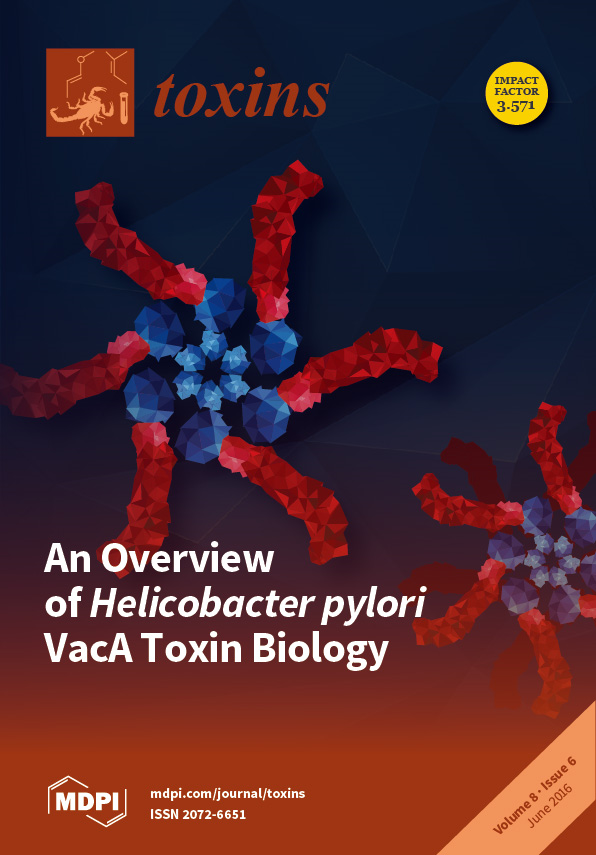Ear rot is a serious disease that affects maize yield and grain quality worldwide. The mycotoxins are often hazardous to humans and livestock. In samples collected in China between 2009 and 2014,
Fusarium verticillioides and
F. graminearum species complex were the dominant fungi
[...] Read more.
Ear rot is a serious disease that affects maize yield and grain quality worldwide. The mycotoxins are often hazardous to humans and livestock. In samples collected in China between 2009 and 2014,
Fusarium verticillioides and
F. graminearum species complex were the dominant fungi causing ear rot. According to the
TEF-1α gene sequence,
F. graminearum species complex in China included three independent species:
F. graminearum,
F. meridionale, and
F. boothii. The key gene
FUM1 responsible for the biosynthesis of fumonisin was detected in all 82
F. verticillioides isolates. Among these, 57 isolates mainly produced fumonisin B
1, ranging from 2.52 to 18,416.44 µg/g for each gram of dry hyphal weight,
in vitro. Three different toxigenic chemotypes were detected among 78
F. graminearum species complex: 15-ADON, NIV and 15-ADON+NIV. Sixty and 16 isolates represented the 15-ADON and NIV chemotypes, respectively; two isolates carried both 15-ADON and NIV-producing segments. All the isolates carrying NIV-specific segment were
F. meridionale. The
in vitro production of 15-ADON, 3-ADON, DON, and ZEN varied from 5.43 to 81,539.49; 6.04 to 19,590.61; 13.35 to 19,795.33; and 1.77 to 430.24 µg/g of dry hyphal weight, respectively. Altogether, our present data demonstrate potential main mycotoxin production of dominant pathogenic
Fusarium in China.
Full article






